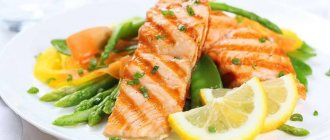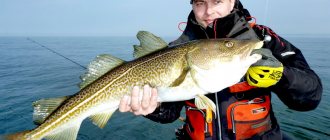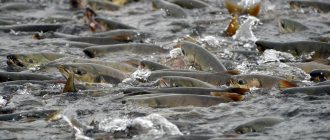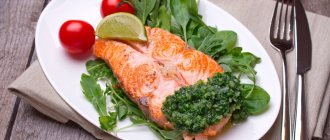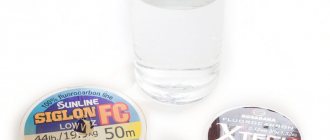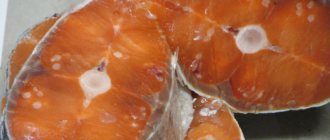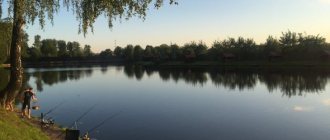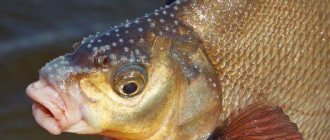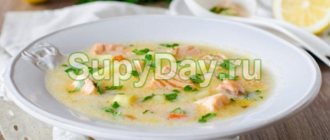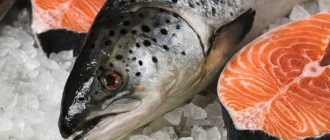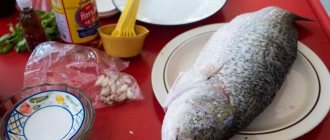Description of salmon fish
The body of the salmon is elongated, compressed at the sides, the scales are silvery. A distinctive feature of Atlantic salmon from lake salmon is the small adipose fin, which is located next to the dorsal fins.
Salmon lives up to 12 years, can weigh up to 42 kg, and the length of the fish reaches one and a half meters.
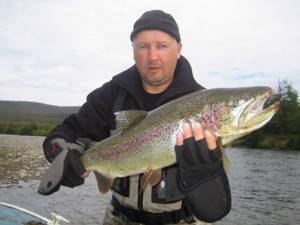
The color of the scales depends on how old the fish is:
- young salmon have dark scales with characteristic spots along the back
- in slightly older individuals, the abdomen is white, while the back is green
- female fish that are in the spawning period, the body has a bronze color with red spots along the sides
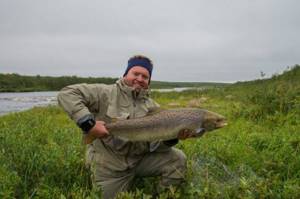
Origin and description
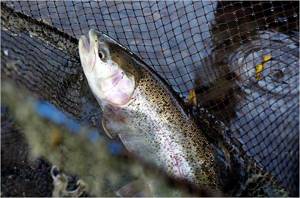
Salmon belong to a group that appeared quite a long time ago: according to some sources, its ancestors originated on Earth millions of years ago. Although they took their current form much later. It is believed that about fifty species belong to this family.
The length of salmon can even reach up to two meters. At the same time, there are also species that are quite small - only twenty or thirty centimeters. The weight of this fish is also a serious indicator. For example, types of salmon such as taimen or salmon reach seventy kilograms.
Their structure is as close as possible to herring-shaped ones. The body, compressed laterally, is distinguished by the presence of a lateral line. Multi-rayed fins are located on the middle part of the belly, while there are no spiny rays on the pectoral fins. Characteristics of salmon are the spots that are its “calling card”. After all, even the name itself, which has an Indo-European root, means “to become covered in spots.”
In what waters does salmon live?
Salmon is initially born in fresh water bodies, after which it gradually moves to salt lakes and seas, where it remains for life. From this we can say that salmon lives almost everywhere.
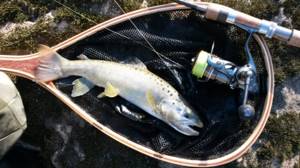
Atlantic salmon can live in the waters of the North Atlantic and can also be found in fresh water in Finland.
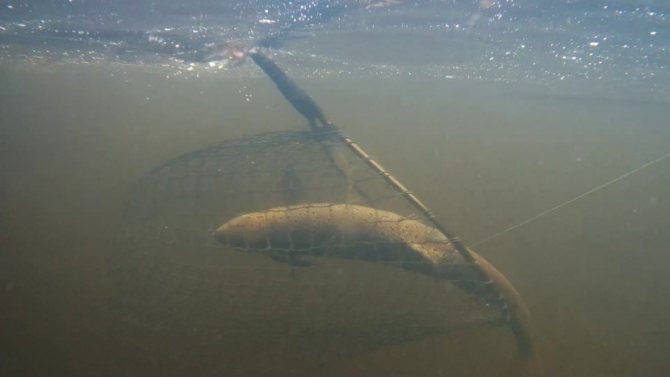
In Russia, fish are found in the waters of the Kola Peninsula, Karelia, the Baltic Sea, Onega, and Ladonezh.
comparison table
The main differences and similarities between trout and salmon are clearly presented in the following table.
| Type of fish/Differences | Salmon | Trout | Salmonidae |
| Body length | 70-100 cm | 25-40 cm | 40—120 cm |
| Body mass | up to 40 kg | 300-400 g | 1—40 kg |
| Habitats | cold waters of the Atlantic Ocean | lakes of northwestern Europe, Scandinavia, high mountain lakes of the Caucasus, Central Asia | mountain rivers of the Kola Peninsula, Scandinavia, Canada, Alaska |
| Muscle fiber color | from light pink to deep red | white, yellow, pink | from pale pink to deep red |
| Amount of caviar | up to 3 kg from one female | 500-1000 eggs (30-50 g) | from 100 g to 5-6 kg |
| Reaching puberty | females after three years, males - two years | females after three years, males after two years | females after three years, males - two years |
What does salmon eat?
The fish eats depending on how many years it lives. Young individuals that live in a river or lake consume plankton and the larvae of various insects.

Gradually growing up, after the age of five, the fish eats crustacean mollusks, shells, and small fish.
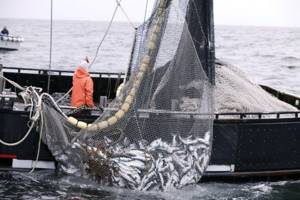
After schools of fish swim to the sea, their main food becomes sprat, capelin, and herring.
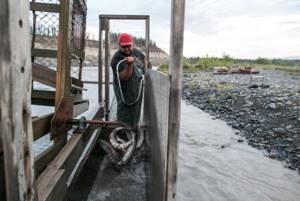
Pacific salmon
Pacific or Far Eastern salmon is one of the most popular groups on the fish market. This includes chum salmon, pink salmon, sockeye salmon, coho salmon, masu salmon, and chinook salmon . Their sad characteristic is that they spawn only once in their life, after which they die immediately. This algorithm is laid down by nature; they have no other choice: when entering the river, all body systems begin to slowly degrade. Wasting of muscles, changes in color or the appearance of spots, changes in the shape of the muzzle and the appearance of a hump (hence the name pink salmon) - these or other changes are characteristic of any Pacific salmon. At some point, the fish simply stops eating due to the death of the digestive system. Some individuals die before reaching spawning.
How are Atlantic salmon bred and raised?
To get tasty, fatty salmon meat, people began to grow this fish in artificial conditions, that is, in sea water, but in special cages. This method of growing fish is most developed in Chile and Norway.
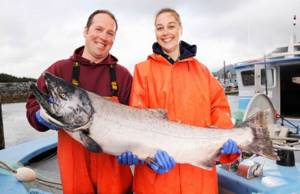
Literally throughout the year, the fish reproduces and grows well, since all the conditions for its maintenance are met. The cost of such cultivation is quite high, so this method is not so well developed in Russia.
Masters of Disguise
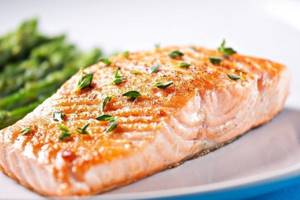
Returning to their native lands, salmon undergo a significant transformation. Due to the fact that the fish do not eat on the way back, some of the internal organs atrophy and disappear. The color of the body also changes, a horny beak grows in the frontal part, scales grow into the skin and a hump appears. Such serious changes are caused by the need to attract a sexual partner. Since most fish die after spawning, salmon make every effort to gain an attractive appearance and leave offspring.
How is salmon useful?
Salmon fish decorates any holiday table; it is not only the most delicious fish, but also the healthiest.
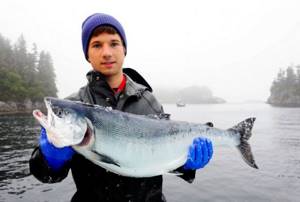
Fish meat is rich in vitamins and minerals, namely calcium, phosphorus, zinc, iodine, etc.
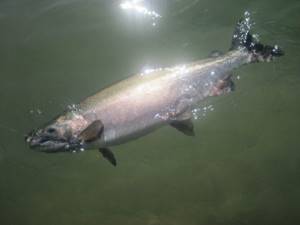
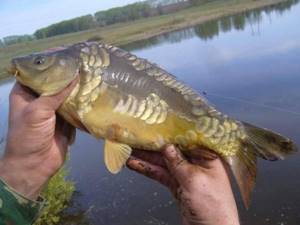
Carp fish - description, main types, useful properties, habitats, catching + 78 photos- Loach - fish lifestyle, nutrition, reproduction process + 71 photos
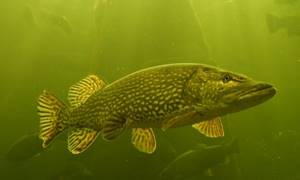
Pike - appearance, habitats, nutrition, varieties, spawning + 86 photos
Atlantic salmon is considered a fattier and higher-calorie fish than white fish. Salmon contains quite a lot of useful omega-3 acids, which are so necessary for the proper functioning of the human heart.
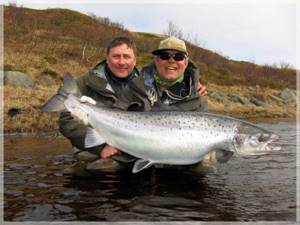
The beneficial components contained in salmon meat can prevent the risk of thrombosis.
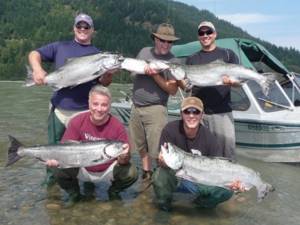
Undoubtedly, this type of fish is loved by all people; lean meat is given even to small children aged one and a half years. Nutritionists recommend using low-fat varieties of fish as a dietary food.
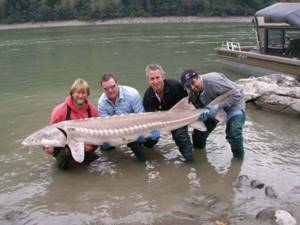
More about trout
In terms of taste, trout differs from salmon. Some fans rate it as a more tender and flavorful fish.
Meat composition
Trout is not as fatty as salmon. It contains no more than 4% fat. It is more suitable for dietary nutrition.
This fish also contains unsaturated fatty acids and Omega-3 complex. The fillet is less structured and does not have white streaks.
Taste benefits
Trout is a delicious fish. It is consumed less often than salmon in salted form, and is often subjected to heat treatment. The habitat and greater susceptibility to helminth infection have an effect.
Fresh trout is baked in foil with a minimum amount of spices or smoked hot. Then the meat retains its juiciness and tender structure.
Benefits for the body
In terms of health benefits, trout is no different from salmon. Due to its lower fat content, it is more suitable for children's and dietary nutrition, without overloading the liver and pancreas with the work of producing enzymes. Contains a large number of microelements.
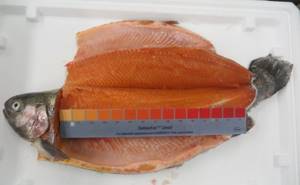
Use in cooking
Trout is not inferior in taste to most types of salmon, and in some cases even surpasses the meat of low-value salmon, such as pink salmon. In cooking it is considered a delicacy.
Trout baked in foil
Ingredients:
- fish - one carcass (300-400 g);
- salt - 5 g;
- black pepper - 0.5 g;
- onion - 1 piece;
- lemon zest - 1 g.
Cooking method:
- The gutted fish is rubbed with salt mixed with pepper and lemon zest on the inside of the belly.
- Half an onion, cut into rings, is placed in the belly.
- Place the fish on a sheet of foil and place the remaining onion rings on top.
- Cover with foil and press tightly into the shape of the carcass.
- Place in an oven preheated to 150°C for 20-25 minutes.
- Serve whole, garnished with thin slices of lemon, salted olives and capers.
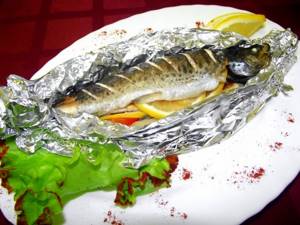
Hot smoked trout
Ingredients:
- trout - one carcass;
- salt - 5 g;
- ground black pepper - 0.5 g.
Cooking process:
- The fish carcass is gutted.
- Wash and dry with a napkin the outside and inside of the abdomen.
- The inner surface of the fish is rubbed with salt.
- Place sawdust from fruit trees or black alder on the bottom of the smokehouse in a layer of 1.5-2 cm.
- The carcass is laid out on slats made of fruit wood (apple, pear, cherry).
- Close the smokehouse with a lid and place it on an open fire.
Smoking time is 25-30 minutes.
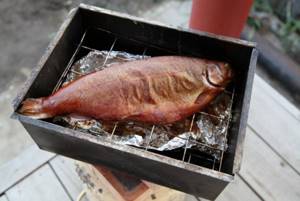
Using caviar
Trout contains a small amount of red caviar - 50-70 grams. In terms of taste, it is not inferior to other salmon products. It is salted in the same way as salmon caviar, following the above recipe.
How to choose in a store
Trout, more often than other salmon, is sold live or chilled. When choosing, pay special attention to the color of live fish. Live brook and rainbow trout should be brightly colored. A gray, faded back indicates that the fish has recently spawned. It is coarser and contains little fat.
Photo of salmon
- Silver carp - fish characteristics, habitats, fishing and bait features + 80 photos

Pike perch - characteristics of the species, seasonality of catch, feeding and spawning + 81 photos
- Ruff - characteristics, varieties, lifestyle, nutrition and reproduction + 56 photos
Pink salmon
This is the most numerous representative of the Far Eastern salmon. Pink salmon is somewhat different from other varieties. For example, its last fin has round spots of black, while the caudal peduncle is much thicker. In addition, pink salmon are relatively small in size. This fish rarely grows more than eighty centimeters in length, and weighs up to five and a half kilograms.
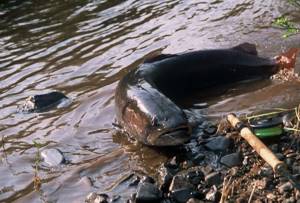
What's the best way to cook?
The next no less significant stage is choosing a healthy cooking method.
Baking salmon in the oven is encouraged. With this method of heat treatment, the maximum volume of vitamins and minerals is preserved, and no significant destruction of polyunsaturated fatty acids is observed.
Less preferred options are:
- boiling;
- stewing;
- frying in a pan.
When boiling or stewing, the amount of beneficial substances is significantly reduced; when frying, a number of carcinogens are released.
You can eat salted or lightly salted salmon, but its biological potential is lower, and excess salt has its own health risks.
It is better to avoid smoked Atlantic salmon altogether. Such a product negatively affects the functioning of the gastrointestinal tract and can provoke an exacerbation of chronic diseases. Cold smoking uses a large number of chemicals that can disrupt pregnancy and even provoke the development of malignant tumors.
Separately, it should be noted that you should not eat raw salmon. Fish meat can cause helminthiasis of various origins.
You can prepare a lot of delicious dishes based on salmon: soups (lohikeitto, curry, ukha), pies, salads and even kebabs. All of them have a pleasant taste and unique aroma.
Atlantic salmon caviar is widely used. It has a grainy structure and a delicate taste with a light aroma of fish. The eggs themselves are red or orange, large (4-6 mm in diameter), fragile (they burst under any mechanical influence).
Fish milk (seminal glands) is also used in cooking.
Salmon is a valuable type of fish. It is necessary to carefully approach the choice of the product itself on store shelves, as well as the method of culinary processing, which will preserve the maximum amount of biologically active substances.
